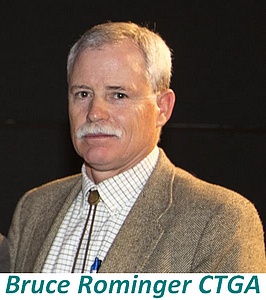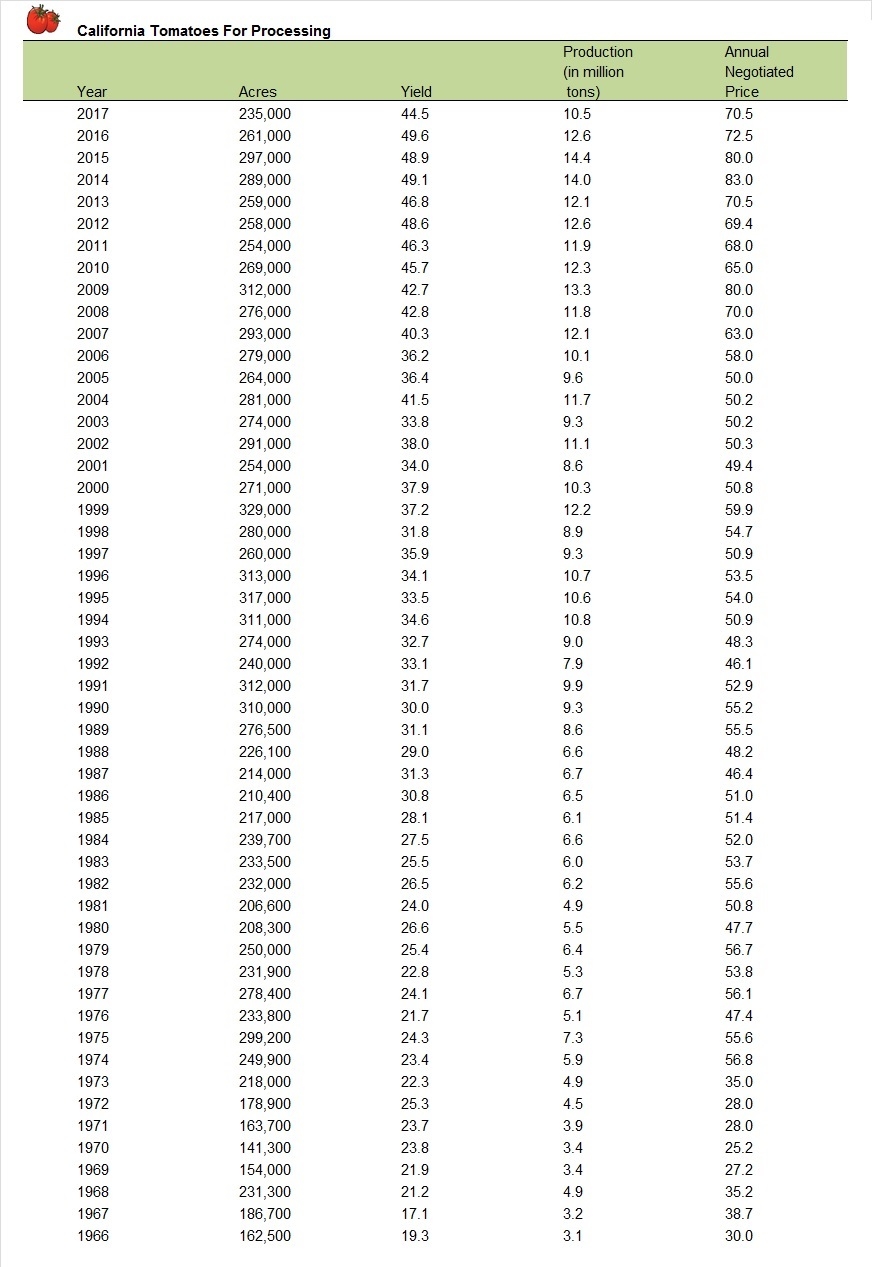Respect for your privacy is our priority
The cookie is a small information file stored in your browser each time you visit our web page.Cookies are useful because they record the history of your activity on our web page. Thus, when you return to the page, it identifies you and configures its content based on your browsing habits, your identity and your preferences.
You may accept cookies or refuse, block or delete cookies, at your convenience. To do this, you can choose from one of the options available on this window or even and if necessary, by configuring your browser.
If you refuse cookies, we can not guarantee the proper functioning of the various features of our web page.
For more information, please read the COOKIES INFORMATION section on our web page.


 The combination of heavy rainfall last winter, followed by extreme summer heat, “once again proved that despite our best planning and intentions, Mother Nature is still in charge,” California Tomato Growers Association President and Chief Executive Officer Mike Montna said during the organization’s annual meeting on 24 January 2018 in Modesto. For CTGA board chairman Bruce Rominger, 2017 was “a very challenging year to be a grower. […] We had a lot of diseases, and our crop yields were down overall, on average, in the state. […] The average tomato grower in California lost money this past year. We need to fix that.”
The combination of heavy rainfall last winter, followed by extreme summer heat, “once again proved that despite our best planning and intentions, Mother Nature is still in charge,” California Tomato Growers Association President and Chief Executive Officer Mike Montna said during the organization’s annual meeting on 24 January 2018 in Modesto. For CTGA board chairman Bruce Rominger, 2017 was “a very challenging year to be a grower. […] We had a lot of diseases, and our crop yields were down overall, on average, in the state. […] The average tomato grower in California lost money this past year. We need to fix that.” At the CTGA annual conference, disease pressures took center stage, especially tomato spotted wilt virus and Fusarium wilt race 3. Bob Gilbertson, a professor of plant pathology at the UC Davis, described a resistance-breaking strain of the spotted wilt virus that first appeared in Fresno County fresh-market tomatoes in 2016, spreading to processing varieties and to other counties last year.
At the CTGA annual conference, disease pressures took center stage, especially tomato spotted wilt virus and Fusarium wilt race 3. Bob Gilbertson, a professor of plant pathology at the UC Davis, described a resistance-breaking strain of the spotted wilt virus that first appeared in Fresno County fresh-market tomatoes in 2016, spreading to processing varieties and to other counties last year. Tomato researchers also want to stay ahead of Fusarium wilt race 3, with an eye to preventing any further mutations. “We’re working very hard on this race 3, because it has become much more of a significant disease for the tomato industry than it had been 20 years ago,” said Scott Stoddard of UC Cooperative Extension in Merced.
Tomato researchers also want to stay ahead of Fusarium wilt race 3, with an eye to preventing any further mutations. “We’re working very hard on this race 3, because it has become much more of a significant disease for the tomato industry than it had been 20 years ago,” said Scott Stoddard of UC Cooperative Extension in Merced. Cleaning harvesting equipment between field movements is highly recommended to prevent introduction, Swett said. Crop rotation also may help reduce inoculum if the field has Fusarium wilt, although there are pitfalls. “We are learning that not all rotation crops are created equal — some appear to host the fungus nearly as well as tomato, although without symptoms, and may increase inoculum loads even in the absence of tomato,” Swett said. “Especially in the first year out of tomato, rotating with crops that do not allow inoculum to build up has the potential to greatly reduce the time out of tomato and the risk that a new pathogen race emerges.” Research is focusing on identifying these crops and learning how long the fungus can last in the soil, she added.
Cleaning harvesting equipment between field movements is highly recommended to prevent introduction, Swett said. Crop rotation also may help reduce inoculum if the field has Fusarium wilt, although there are pitfalls. “We are learning that not all rotation crops are created equal — some appear to host the fungus nearly as well as tomato, although without symptoms, and may increase inoculum loads even in the absence of tomato,” Swett said. “Especially in the first year out of tomato, rotating with crops that do not allow inoculum to build up has the potential to greatly reduce the time out of tomato and the risk that a new pathogen race emerges.” Research is focusing on identifying these crops and learning how long the fungus can last in the soil, she added. Along with diseases concern, trade issues are also on the minds of tomato growers. In his remarks, Montna said overseas markets will be crucial to growth during the next decade. About 7% to 8% of shipments are to Mexico and Canada, partners with the U.S. in the North American Free Trade Agreement, which is being renegotiated. “We don’t want NAFTA to go away,” Rominger said. “Mexico and Canada are big users of our tomato products.”
Along with diseases concern, trade issues are also on the minds of tomato growers. In his remarks, Montna said overseas markets will be crucial to growth during the next decade. About 7% to 8% of shipments are to Mexico and Canada, partners with the U.S. in the North American Free Trade Agreement, which is being renegotiated. “We don’t want NAFTA to go away,” Rominger said. “Mexico and Canada are big users of our tomato products.”



























